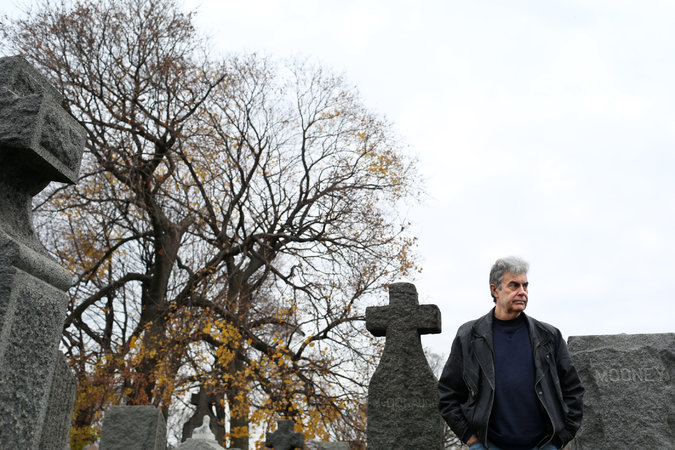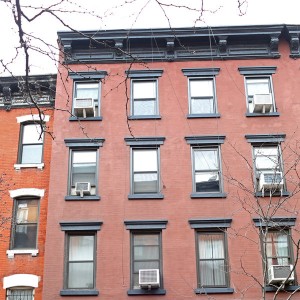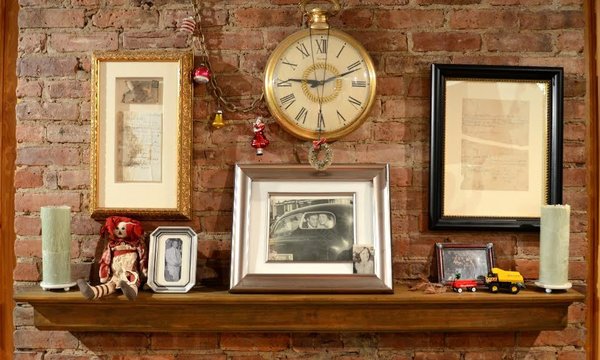I love this story, from NYTimes

By COREY KILGANNONDEC. 21, 2015

Last week, Peter Mattaliano, 66, an acting coach and screenwriter, put up Christmas decorations in his Hell’s Kitchen apartment and laid out presents for the children: Mary and Alfred.
These are not Mr. Mattaliano’s children, and they are no longer living. But a century ago they lived in what is now Mr. Mattaliano’s home.
He has honored Mary and Alfred every December for the past 15 years, ever since he learned of their existence when he renovated his fireplace. It had been sealed with brick for more than 60 years.
“My brother does construction, and I had him open up the fireplace,” he said. “We were joking that we might find Al Capone’s money. Then my brother yelled to me and said, ‘You’re not going to believe this.’ ”
In the rubble and dust, Mr. Mattaliano’s brother found a delicate piece of paper with faint children’s scrawl bearing a request to Santa from a century earlier.
“I want a drum and a hook and ladder,” read the letter, adding that the fire truck should be one with an “extentionisting” ladder. It was dated 1905 and signed “Alfred McGann,” who included the building’s address.

Mr. Mattaliano’s apartment in Hell’s Kitchen, a neighborhood once home to poor Irish immigrants. In her letter, Mary hinted at her family’s poverty in wishing for a wagon for her brother. Credit Yana Paskova for The New York Times
There was another item in the rubble: a small envelope addressed to Santa in “Raindeerland.” Inside was a second letter, this one dated 1907 and written by Alfred’s older sister, Mary, who had drawn a reindeer stamp as postage.
“The letters were written in this room, and for 100 years, they were just sitting there, waiting,” said Mr. Mattaliano.
He learned through online genealogical research that the siblings were the children of Patrick and Esther McGann, Irish immigrants who married in 1896. Mary was born in 1897 and Alfred in 1900.
The family lived at 447 West 50th Street, where Mr. Mattaliano now lives in a fourth-floor apartment filled with books on acting and mementos from his days as a fast-pitch knuckleballer.
Patrick McGann died in 1904, so by the time the children wrote the letters left in the chimney, they were being raised by Ms. McGann, a dressmaker.
Mary’s letter is as poignant as Alfred’s is endearing.
“Dear Santa Claus: I am very glad that you are coming around tonight,” it reads, the paper partly charred. “My little brother would like you to bring him a wagon which I know you cannot afford. I will ask you to bring him whatever you think best. Please bring me something nice what you think best.”
As part of his yearly holiday tradition, Peter Mattaliano honors the memory of a woman whose century-old letter to Santa Claus he discovered hidden in his fireplace.
She signed it Mary McGann and added, “P.S. Please do not forget the poor.”
Mr. Mattaliano, who has read the letter countless times, still shakes his head at the implied poverty, the stoicism and the selflessness of the last line, all from a girl who requests a wagon for her brother first and nothing specific for herself.
“This is a family that couldn’t afford a wagon, and she’s writing, ‘Don’t forget the poor,’ ” he said. “That just shot an arrow through me. What did she think poor was?”
Then there was the fact that the letters had survived at all, perhaps avoiding incineration by being tucked on a ledge or in a crevice in the chimney.
“I have no idea how that paper made it,” he said.
The letters have become “my most treasured possessions,” said Mr. Mattaliano, who had them framed and displays them year-round above the mantel of the fireplace where they had been discovered. On Friday, they were joined by ornaments and mementos, along with a dump truck, a miniature wagon and a doll. “I wanted them to have a Christmas present, even if it was 100 years too late,” he said.
The story is well known among his friends, neighbors, acting students and the regulars at a longstanding Friday night poker game.

Letters from two Irish children were found tucked in the chimney of Mr. Mattaliano’s apartment. They now hang above the fireplace, near presents he bought for them. Credit John Quilty
“I’m the new guy in the group, and I’ve been there since the late ’80s,” said Mr. Mattaliano, whose roster of actors he has coached includes Jill Clayburgh and Matthew Morrison.
For Mr. Mattaliano, the letters summoned a link to his years growing up in an apartment in Jersey City. He would leave letters to Santa under the tree on Christmas Eve.
When Mr. Mattaliano was 12, his father, who was 47, died of cancer just before Christmas, leaving his mother, Margaret Costello, to raise him and his three younger brothers on her own.
“So we had a few rough years,” he said. “For the next couple years, our Christmases were a little lean.”
Mr. Mattaliano, who has lived in Hell’s Kitchen for 36 years, saw the children’s letters as a testament to the immigrant struggle in New York..
“I’m sharing their space,” he said. Their spirits remain in the apartment, he believes, forever young, in something of a Hell’s Kitchen snow globe.
He has written a movie script based on the letters, titled “Present From the Past.” It is fictionalized, but includes the letters quoted word for word and the children depicted as spirits in the apartment.

Records in a Manhattan court, where Mr. Mattaliano searched a 1905 census. Credit Yana Paskova for The New York Times
Mr. Mattaliano said he had attracted the interest of investors and hoped to start working on the film by the spring, using Broadway actors and shooting in Hell’s Kitchen and indoors on a set that replicates his apartment.
But even after he had written the script, he knew almost nothing about Alfred or Mary. He wanted to know more, and he wanted to give the letters to their family.
He began looking on genealogy websites and found census data that had basic information about the family. With the help of a reporter and a researcher from The New York Times, he found out more, including the father’s death.
By 1920, Mary, Alfred and their mother had moved up to West 76th Street. As young adults, Mary worked as a stenographer and Alfred as a printer. By 1930, Mary had married the similarly named George McGahan and moved to the Bronx, and later to Queens. Her brother also married.
But, so far, Mr. Mattaliano has not found any living blood relative. Neither sibling appeared to have children and both apparently died in Queens; Mary in 1979, at 82, three years after her husband. She is buried in Flushing. Alfred’s burial location is unclear, perhaps because his birth name was John Alfonse McGann. He seems to have died childless in 1965 in Queens. His wife, Mae, died in 1991.
Mr. Mattaliano met with Bruce Abrams, a volunteer at the Division of Old Records in the Surrogate’s Court in Lower Manhattan, and saw proof of the 1904 death of the children’s father.
“So their mother became the breadwinner — that’s why they couldn’t afford a wagon,” he said. “She was a widow at 35 with two kids.”
On a recent weekday, Mr. Mattaliano took the No. 7 train to Flushing, carrying a small, potted tree for Ms. McGahan’s grave site. He walked into the office at Mount St. Mary’s Cemetery and was told her grave location: Division 11, Row F, Grave 108.
The modest headstone bore the name McGahan, but only her husband’s name, George, not Mary’s.
Mr. Mattaliano said he would look into having Ms. McGahan’s name added to the gravestone. He put his hand on the grave and murmured little Mary’s Christmas reminder to Santa: “Please do not forget the poor.”
“You know, I might have to come out here every Christmas,” he said as he turned to leave, and then added over his shoulder, “I’ll be back.”
Doris Burke contributed research.